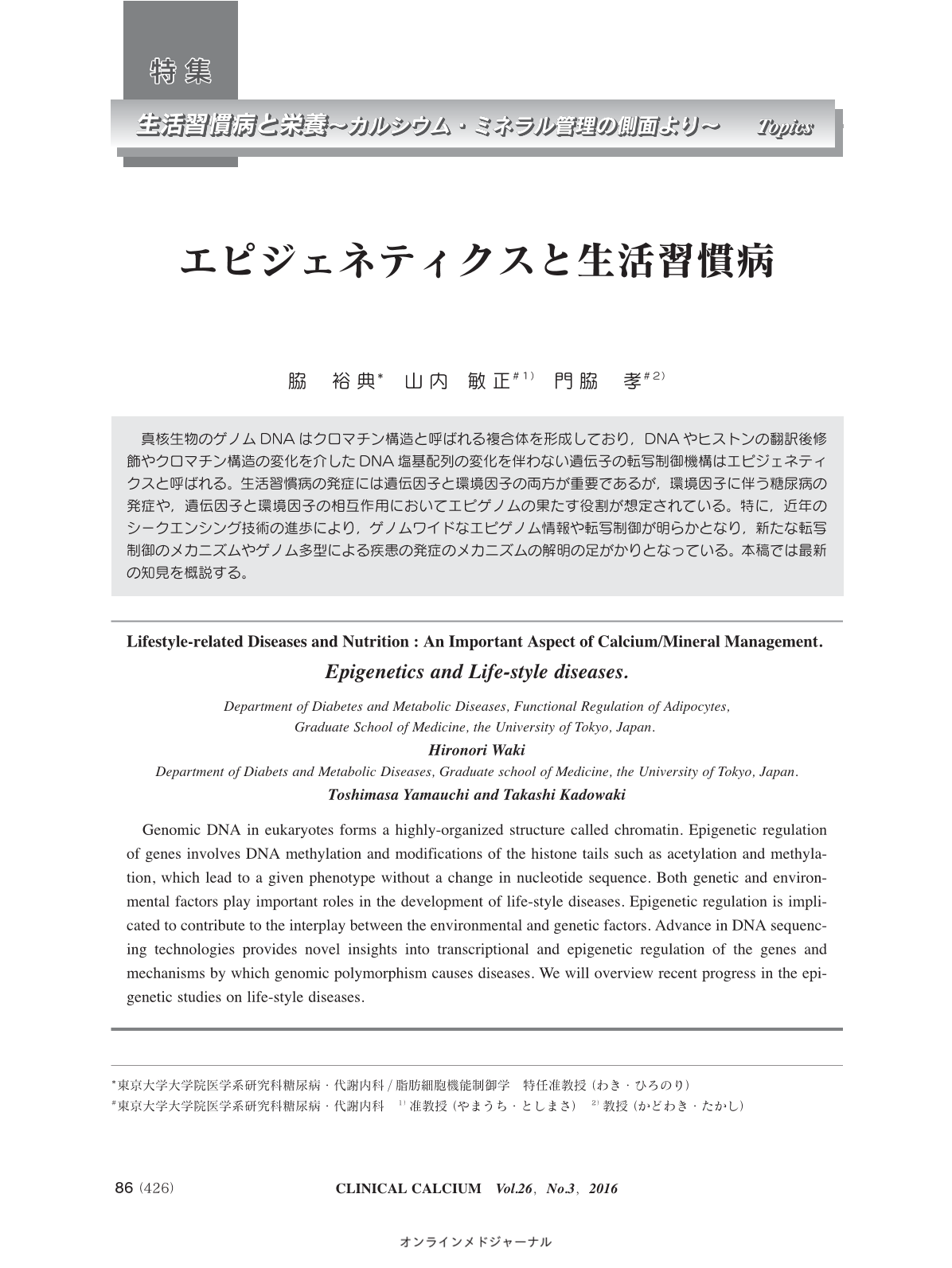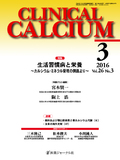Japanese
English
- 有料閲覧
- Abstract 文献概要
- 1ページ目 Look Inside
- 参考文献 Reference
真核生物のゲノムDNAはクロマチン構造と呼ばれる複合体を形成しており,DNAやヒストンの翻訳後修飾やクロマチン構造の変化を介したDNA塩基配列の変化を伴わない遺伝子の転写制御機構はエピジェネティクスと呼ばれる。生活習慣病の発症には遺伝因子と環境因子の両方が重要であるが,環境因子に伴う糖尿病の発症や,遺伝因子と環境因子の相互作用においてエピゲノムの果たす役割が想定されている。特に,近年のシークエンシング技術の進歩により,ゲノムワイドなエピゲノム情報や転写制御が明らかとなり,新たな転写制御のメカニズムやゲノム多型による疾患の発症のメカニズムの解明の足がかりとなっている。本稿では最新の知見を概説する。
Genomic DNA in eukaryotes forms a highly-organized structure called chromatin. Epigenetic regulation of genes involves DNA methylation and modifications of the histone tails such as acetylation and methylation, which lead to a given phenotype without a change in nucleotide sequence. Both genetic and environmental factors play important roles in the development of life-style diseases. Epigenetic regulation is implicated to contribute to the interplay between the environmental and genetic factors. Advance in DNA sequencing technologies provides novel insights into transcriptional and epigenetic regulation of the genes and mechanisms by which genomic polymorphism causes diseases. We will overview recent progress in the epigenetic studies on life-style diseases.



